Advertisement
Chip Off The Old Block: Nesting Dolls At Museum Of Russian Icons
“In Russia, think about the cold white winter nights, minus 40 degrees outside. You’re somewhere in the middle of Siberia. It’s all covered with snow,” explains Marina Forbes.
With the bitter weather limiting outside activities, families have long found ways to stay busy indoors. “The whole family,” she says, “will be carving spoons, furniture, nested dolls. And women and children will be painting.”
Some 83 sets of such traditional wooden nesting dolls, from sets produced before World War II to dolls originating in post-Soviet era regional centers of Matryoshka production, are the focus of “Matryoshka: The Russian Nesting Doll” at Museum of Russian Icons in Clinton, Massachusetts through July 20. Designs in the exhibition, which was organized by the Museum of Russian Art in Minneapolis, range from classic peasant girls to the Romanov dynasty of czars, from Soviet leaders to a cosmonaut and rocket.
If you want to learn to make them yourself, Forbes—an artist who grew up in St. Petersburg, Russia; moved to the United States two decades ago; and now resides in Rochester, New Hampshire—offers three separate three-hour nesting doll workshops at the museum on June 15, June 27 and July 10. She tells the history of the Matryoshka dolls and then leads participants, frequently family groups, in painting their own sets while listening to “soothing” and “inspirational” Russian folk music.
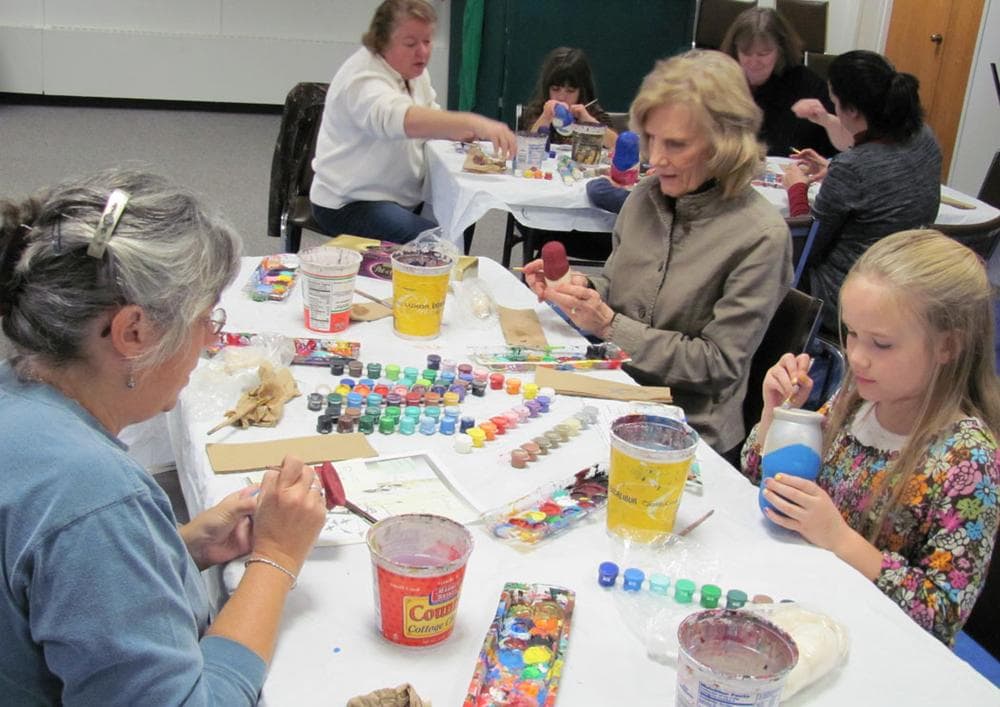
“I’m a traditional Russian artist. I do Russian icon paintings, those religious paintings,” Forbes says. “I just totally am powered by 1,000 years of tradition. I understand the concept. I understand the trend.”
The bell-shaped Matryoshka dolls—which split open to reveal a series of ever smaller dolls, each subsequent one nested inside the previous doll—appear in Russia in the second half of the 19th century. Their origins are foggy. Some accounts say the dolls are based on a nesting doll imported from Japan. A variation of that tale says the doll imported from Japan was made by a Russian monk stationed there.
The Museum of Russian Icons states that “the first Russian nested doll set was carved in 1890 by Vasily Zvyozdochkin from a design by Sergey Malyutin, a folk crafts painter in the Abramtsevo estate of the Russian industrialist and art patron Savva Mamontov.” The 1990 tome “Folk Art in the Soviet Union” by Tatyana Razina, Natalia Cherkasova and Alexander Kantsedikas, also gives Malyutin credit, but says he did it in “the trading quarter of the Trinity-Sergius Monastery.”
Advertisement
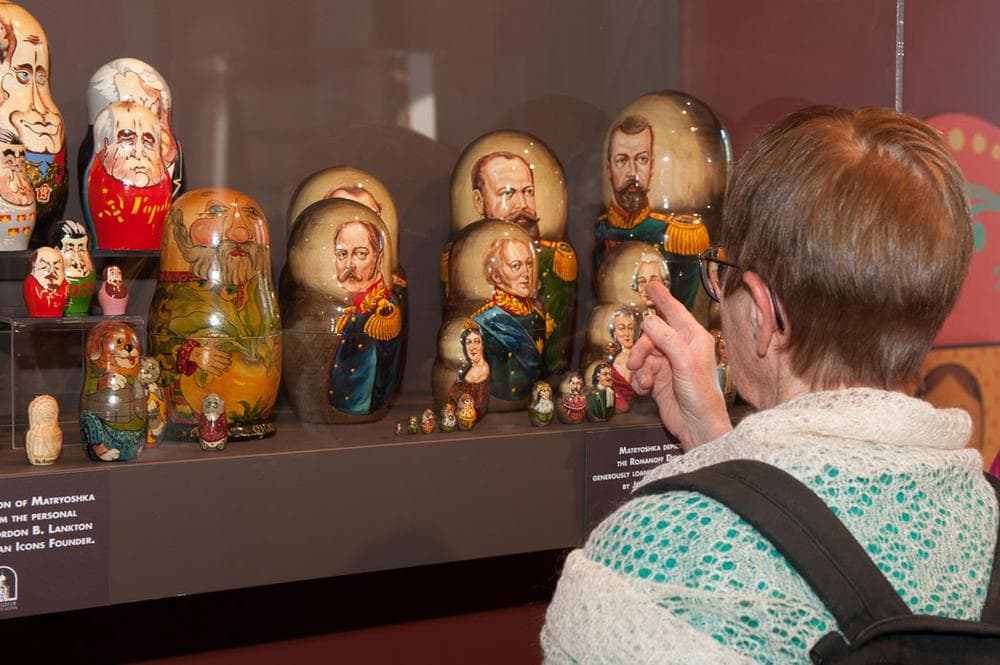
Regardless, what does seem clear is that Matryoshka dolls took off internationally when samples were presented at the Exposition Universelle, a world’s fair in Paris in 1900. And after the 1917 Russian Revolution, the Soviets continued to support production of the dolls as a core example of traditional Russian culture—the name itself, Matryoshka, Forbes says, “is a typical Russian peasant girl name.”
The classic nesting doll design depicts that stout young woman, with a scarf over her head, and dressed in an apron, perhaps all decorated with blooming plants.
“Because we have those long winter nights, that’s why we develop those floral and berry designs,” Forbes says. “It’s about a dream of a world where it’s always warm and bright.”
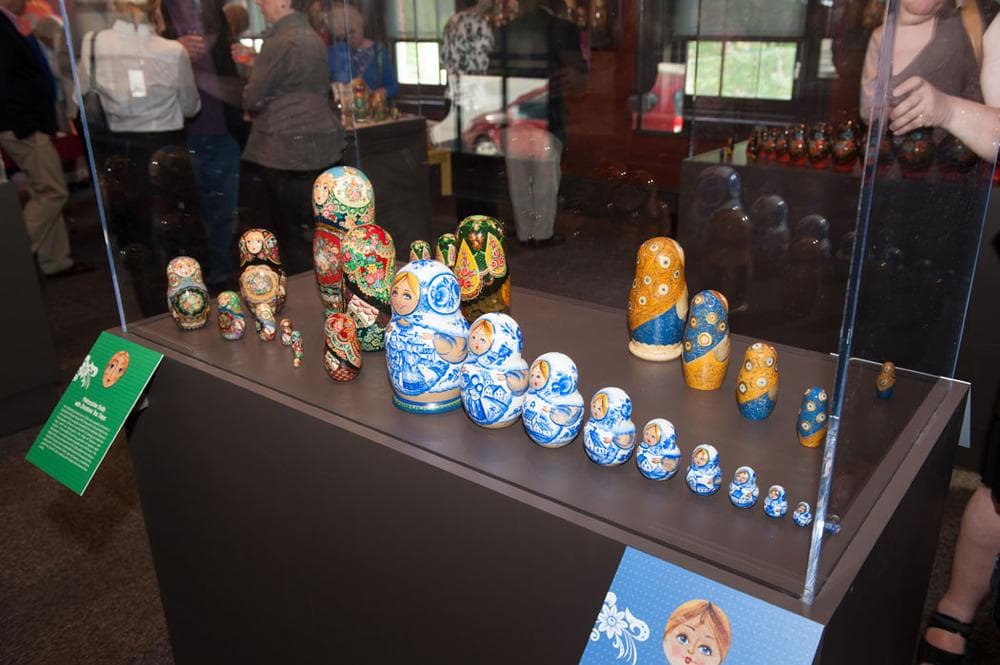
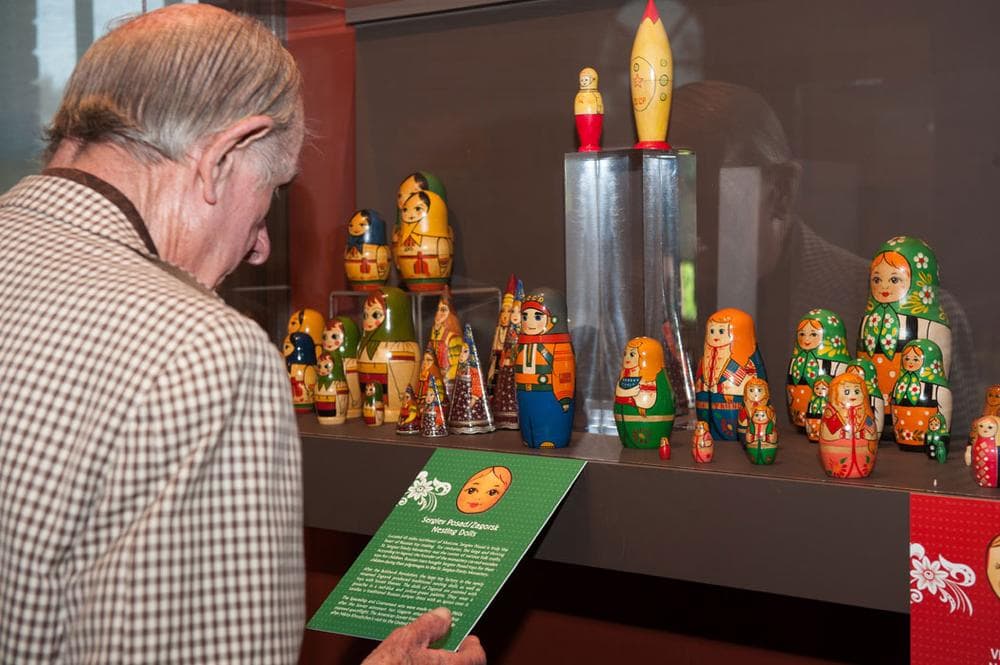
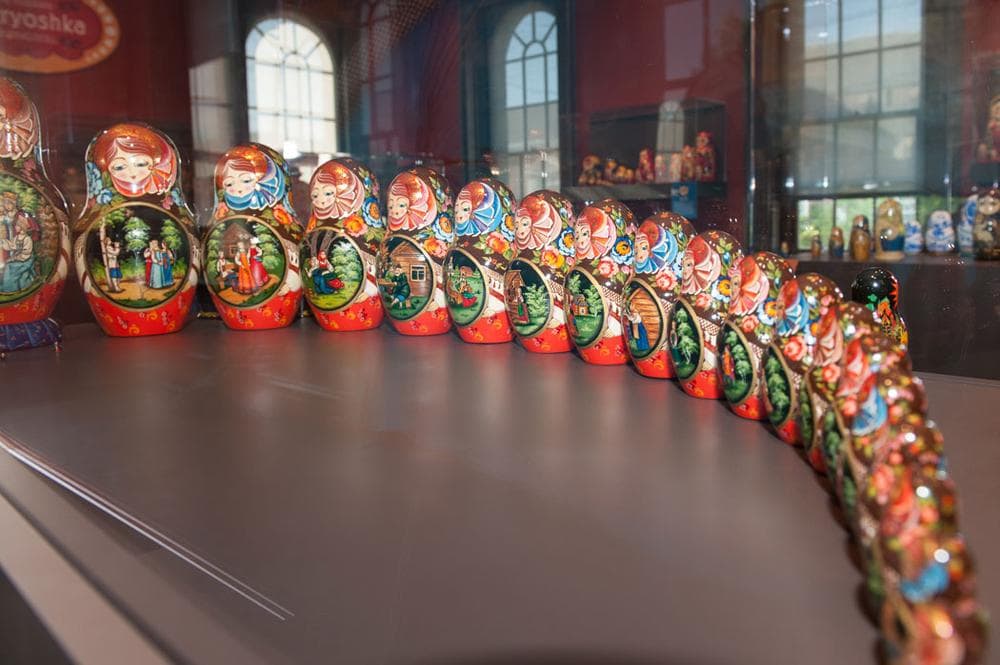
This program aired on June 12, 2013. The audio for this program is not available.
